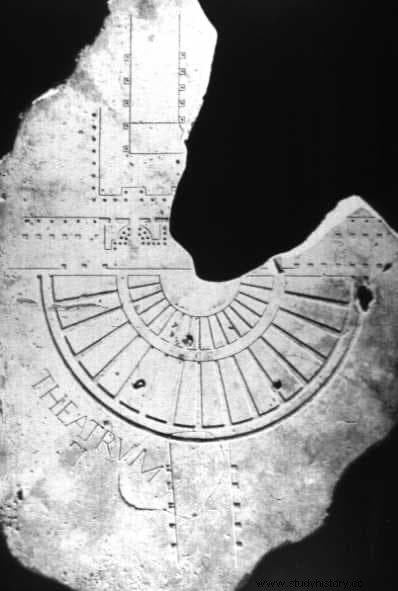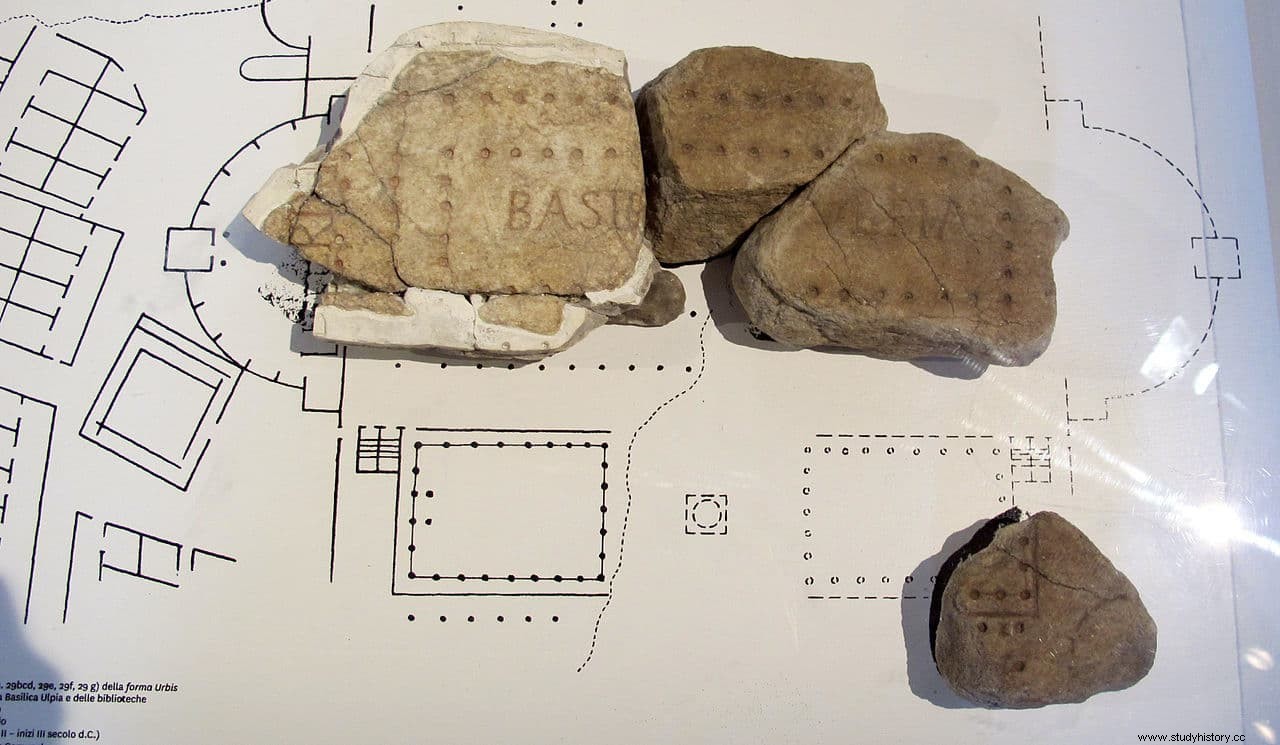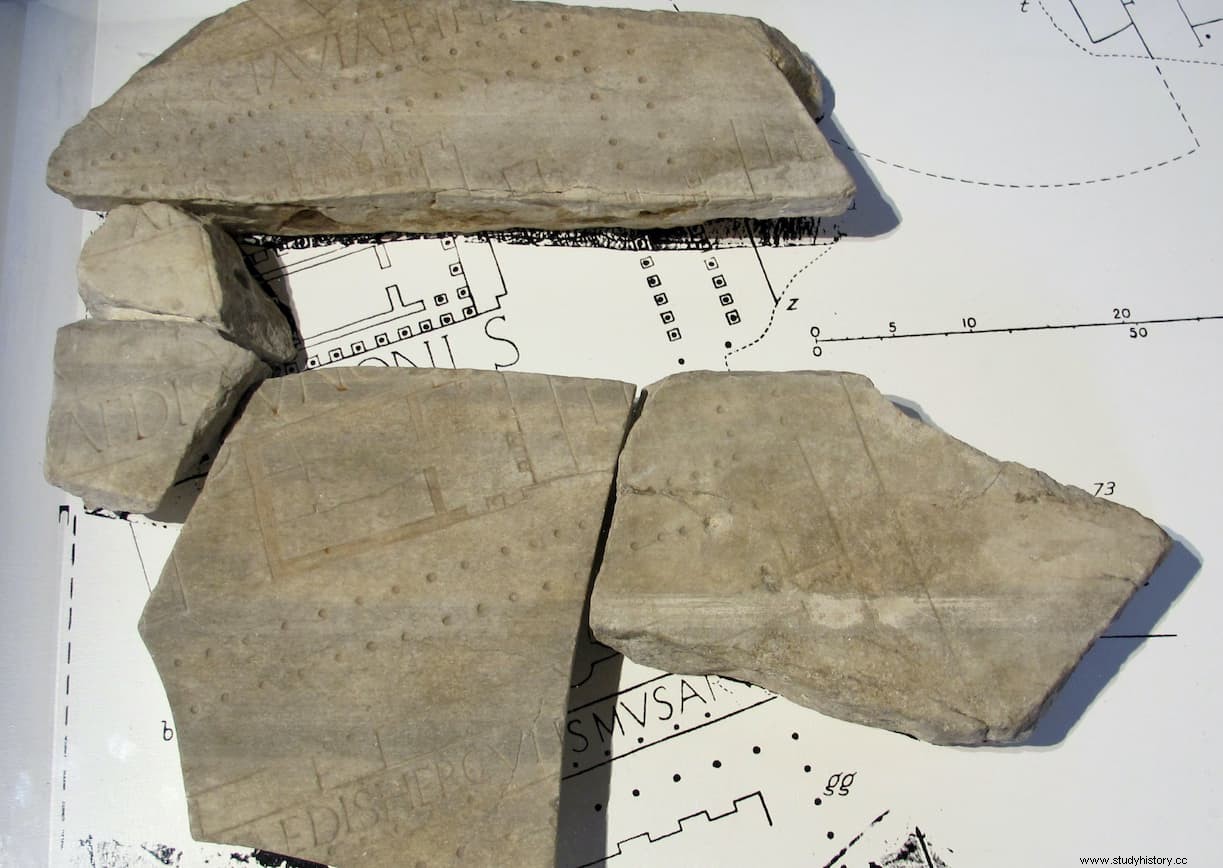The Urbis Form (also known as Severian Urbis Form listen)) was a gigantic plan of ancient Rome sculpted in marble during the reign of Emperor Septimius Severus, between 203 and 211 AD. Its original size was 18 by 13 meters , and was made up of 150 marble plates that covered an entire wall of the Temple of Peace.
Interestingly, the layout of the plan, which was made at a scale of 1:240, showed north down and south up (actually southeast), much like later Islamic maps.
It was a cartographic representation of the city of Rome, with details of the floors of each temple, baths, islands, shops, palaces and other buildings, including stairs. It also included the names of the streets and the most important buildings.

But after the fall of the Western Roman Empire, the map was gradually destroyed, its fragments being used in new buildings and to make lime.
So today only about 10-15 percent of the original remains, fragmented into 1,186 pieces.
There are no references to the plan in the ancient sources, so its dating is based on the evidence of the map itself, that is, based on the elements represented. For example, no monument after the time of Septimius Severus appears in the surviving fragments.
Nor is it known what its function was, although some scholars think that the room in which it was located corresponded to the office of the Prefect of the city, who was in charge of the administration, the police and the conservation of the buildings. Which seems to make a lot of sense, if the map could have been used as a locator.
Something that seems unlikely since it would be difficult to see the details of its upper part, at 13 meters high. Therefore, the most popular theory is that it had a mere ornamental function.

The first findings of fragments were produced in 1562 in the garden adjacent to the Church of San Cosme and San Damián. In fact, the church, which was built around 530 attached to the Temple of Peace, included the wall where the map was.
From 1741 they were exhibited in the Capitoline Museum, and copies of lost pieces were even made to fit the originals. Since then, more fragments have turned up in excavations, building restorations, and tunnel and road construction. Since 1998 it has been exhibited at the Museo della Civiltà Romana.

Stanford University maintains a project and a database whose objective is to study the map and manage to order all the fragments that, until now, no one has been able to place in their original position.
In early 2016, the discovery was announced that a large fragment found in 2014 matched many of the previously found pieces. This new piece appeared during the restoration of the Maffei Marescotti Palace in the Vatican, possibly reused in its construction in the 16th century. And it is important because this large fragment corresponds to the current Ghetto area, one of the most monumental in the ancient city, dominated by the Circo Flaminio built in 220 BC, whose name appears on it.
All excerpts can be viewed online at the Stanford Digital Forma Urbis Romae Project.
